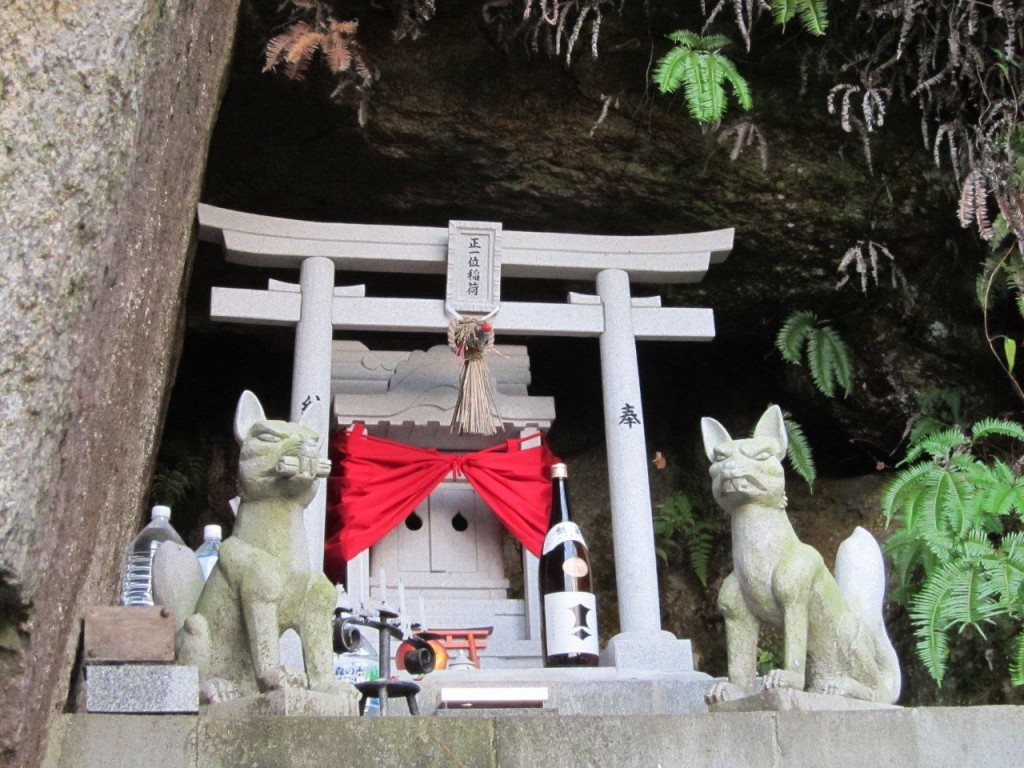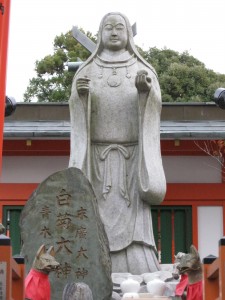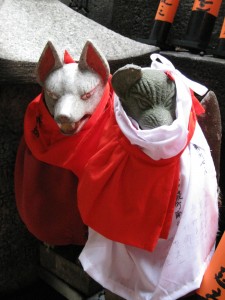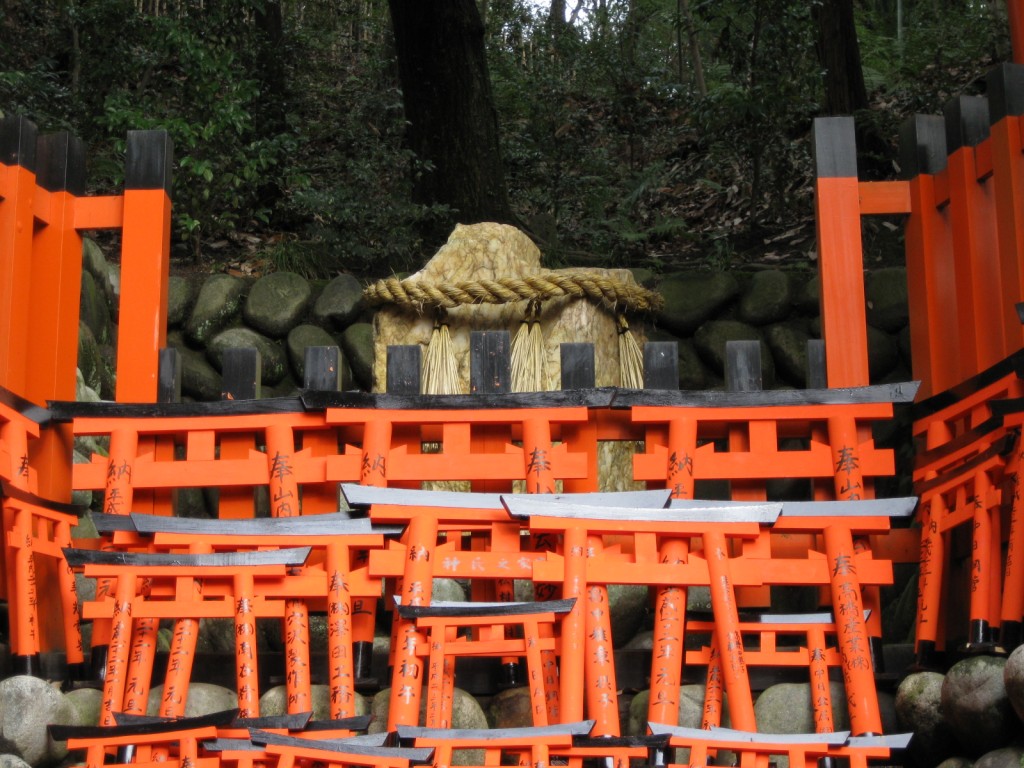
One of the countless small Inari shrines to be found around the Japanese countryisde
The spread of Inari belief in the West has taken an important step forward with the launch of an exciting new website dedicated to the deity. It can be found at the following address: http://www.inarishrine.com/

A statue of Inari as a young fertile female
The site is still under construction, but already has some impressive features. Written by a Welsh devotee of Inari who goes by the name of Spiritfox, the site’s webpages include descriptions of Inari, information about the fox-messenger, sites dedicated to Inari outside of Japan, and a useful list of further reading.
On the webpage for Articles/Resources, there is a wealth of links to look into, some of which seem fascinating indeed. As well as the pages on Inari, there are blogs, fox-lore articles, Inari Shrine listings in Japan and a piece on combining paganism with Inari worship. The page also includes a section on Konkokyo, a Shinto sect with international branches in Korea, the US and South America. This owes itself to the spiritual background of Spiritfox (and something which Green Shinto hopes to look into in a future posting).
Still under construction are the Links page and, intriguingly, an Online Shrine page. It will be worth checking back on these again in future, but for the meantime let’s leave this venture with the site’s introduction to its central kami and its raison d’etre…
Inari (稲荷大神) is a Japanese kami from the Shinto faith of Japan. Inari has over 32,000 registered shrines and temples dedicated to her, one third of all Shinto shrines in Japan. It is said that this does not include the home shrines, roadside shrines and other small shrines in and outside of Japan which would bring the number to way over 100,000.
Fox messengers of Inari
Inari is associated with many other deities in both Shinto and Buddhism; mainly food deities. Inari is mainly associated with various manifestations of the Hindu deity Dakini or Dakiniten (荼枳尼天), who is associated with Daikoku-ten (大黒天), the Hindu God of Five Cereals. In Japan, Daikoku-ten is one of Japan’s Seven Lucky Gods and the luck-bringing protector of the Earth, farming and farmers, business and general good luck. Daikoku imagery in Japan is also identified with the mythical Shinto figure O-kuninushi-no-Mikoto (大国主命, translated as ‘Prince Plenty’ or ‘Prince Ruddy Plenty’), another deity of rice.
The entrance to an Inari shrine is usually marked by one or more red torii and some statues of kitsune (Spirit/magical foxes), which are often adorned with red yodarekake (votive bibs) by worshippers out of respect. This red colour has come to be associated with Inari because of the prevalence of its use among Inari shrines and their torii.
The main shrine is the Fushimi Inari shrine in Fushimi, Kyoto, where the paths up to this shrine hill are marked in this fashion. The kitsune statues are at times taken for a form of Inari, and they typically come in pairs, representing a male and a female. These fox statues hold a symbolic item in their mouths or beneath a front paw – most often a jewel and a key, but a sheaf of rice, a scroll, or a fox cub are also common.
Inari is also worshiped in Buddhism, though she is represented as female or androgynous and referred to as Dakiniten. In this form she is a Bodhisattva and rides upon a flying white fox.
Inari shrines in Japan are characterised by their red torii



Does anyone know wat the kanji on the grey torii says? Both the top and on the verticaal pillars.
On the vertical pillars it says Donation. The kanji at the top of the torii gives the name of the shrine, though it’s not clear enough for me to read…
Sad that the page is no longer available.
Tomio, try the Shusse Inari Shrine of America site, http://shusseinarishrine.org/, or check out the Inari Faith International group on Facebook, https://www.facebook.com/groups/inarifaith/?fref=nf